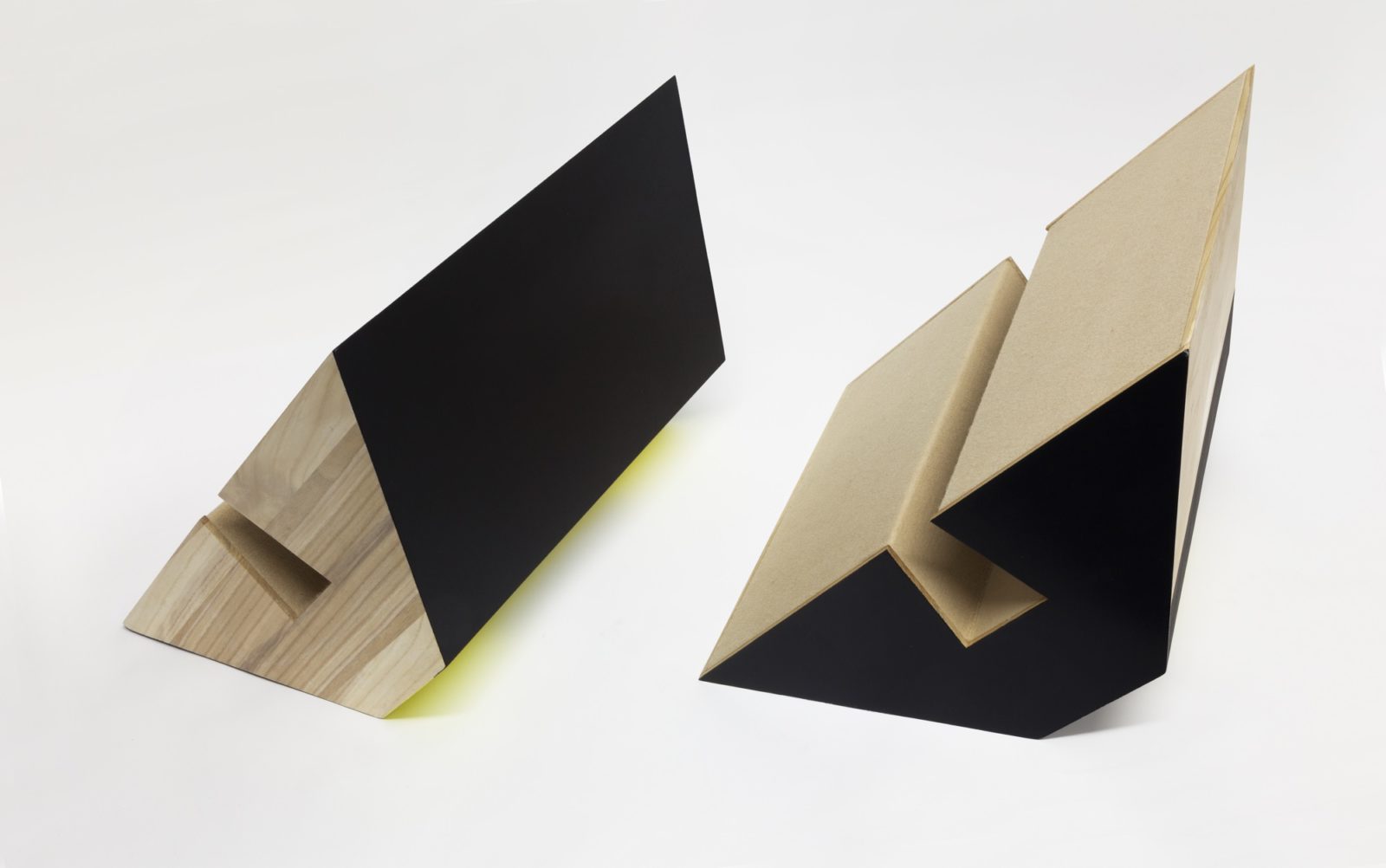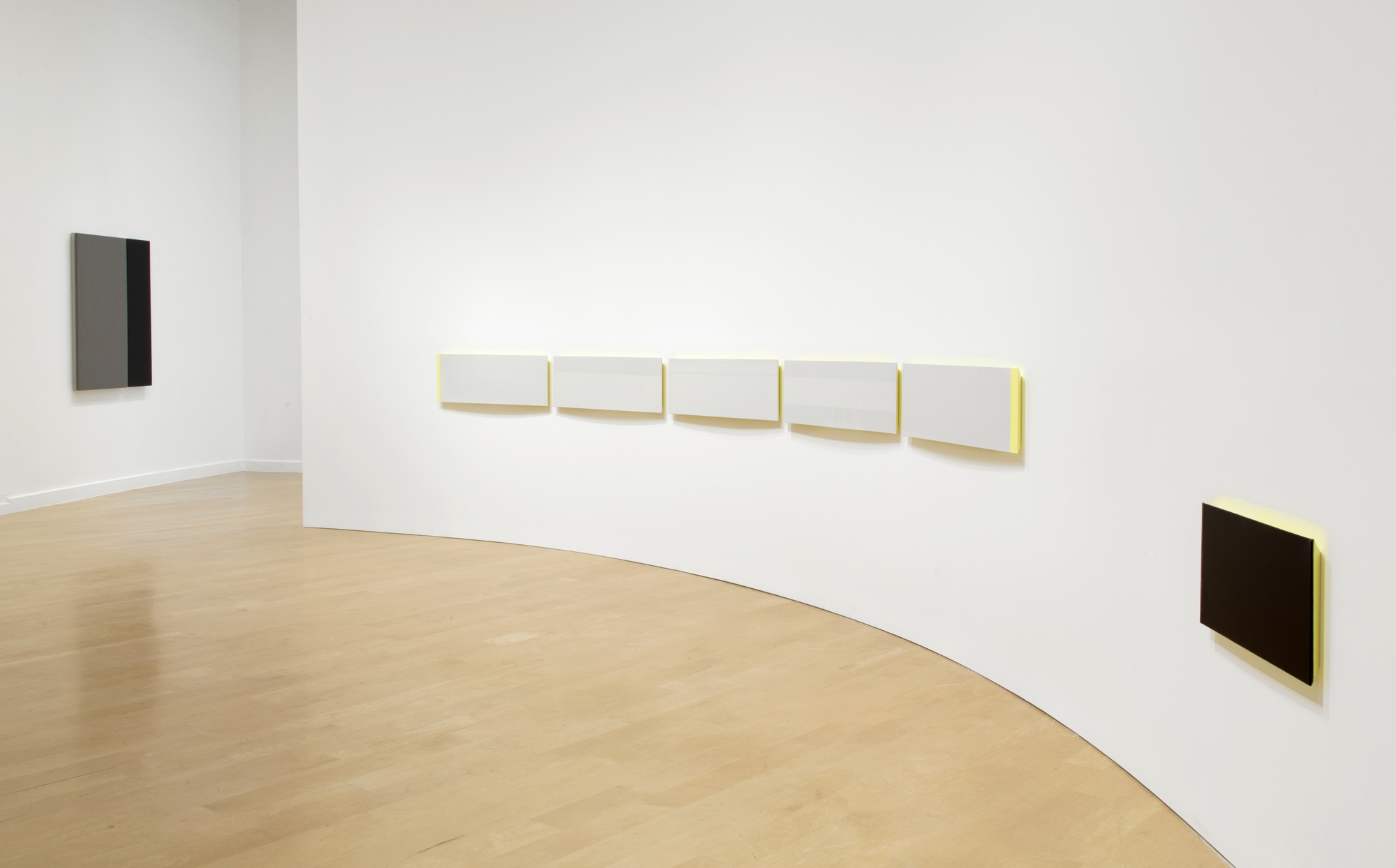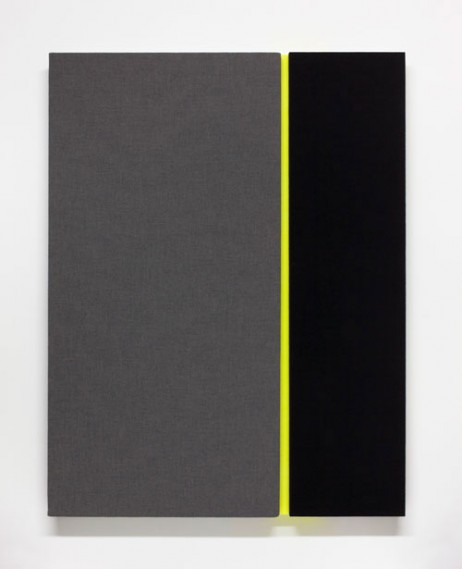Higher Resonance: Jennie C. Jones’ Revisionist Modernism

The newest offering in the Directions series at the Hirshhorn Museum and Sculpture Garden in Washington, DC is the first solo museum exhibition of Creative Capital Jennie C. Jones. A site-specific installation spanning painting, sound and sculpture, Higher Resonance addresses the central themes of Jones’ artistic practice, creating a multisensory experience interweaving the narratives of black history and art history.
 Installation view of Directions: Jennie C. Jones: Higher Resonance at the Hirshhorn Museum and Sculpture Garden, Washington, DC, 2013. Photo: Cathy Carver.
Installation view of Directions: Jennie C. Jones: Higher Resonance at the Hirshhorn Museum and Sculpture Garden, Washington, DC, 2013. Photo: Cathy Carver.
Jennie C. Jones grew up listening to jazz. Though she never received formal musical training, Jones transformed her interest in music and her engagement with history and theory into an audio-visual practice. Struggling to find the content at the heart of her largely abstract, conceptual work, Jones had what she calls her “artistic epiphany”: the realization that the music she was listening to as she drew or painted directly affected the marks she made.
“Sometimes, when I am really ‘in the zone,'” she said in an interview, “I almost feel that the gesture of making a line is the duration of a note, and it becomes a conceptual practice—the relationship between listening and drawing.”
Jones’ approach, which she has called “listening as a conceptual practice,” is more than merely visualizing sound. Jones inserts sound directly into her work, allowing it to interact with her visual pieces, telling a more complete story of the African-American experience—and its absence—in modern art. As an artist critically aware of her role in the art world as an African-American woman, Jones calls upon her training and her identity to construct a revisionist history, one which acknowledges abstract work by black artists left out of art history’s Modernist canon.
Accordingly, Jones looks at bebop, a jazz practice pioneered by avant-garde black musicians, as her artistic precedent. Bebop, she says, was “complete, total, insane abstraction happening in black cultural production, but it just wasn’t in the museums.” Through “listening as a conceptual practice,” Jones renders visible these abstract black artists left out of the aesthetic sphere. Her process of coupling microsampled sound pieces spliced from avant-garde black jazz musicians with sculpted or painted visual abstraction that directly references the work of her white, male, Modernist influences elucidates the innovations of her predecessors, while creating a radical, new space for the reading of Modernism.
In Higher Resonance, Jones explores visual and sonic elements of the gallery space, encouraging visitors to see how sound affects—and is affected by—her paintings, sculptures and the gallery’s curved walls. Her minimalist paintings, reminiscent of Barnett Newman and Kazimir Malevich, are not merely aesthetic; painted on acoustic absorber panels used to dampen echoes in recording studios, Jones’ Acoustic Paintings directly affect ambient sound in the gallery. Her sculptural works, too, utilize recording studio equipment. Bass Traps with False Tones features a pair of painted acoustic bass absorbers, normally used to damp low-frequency, reverberating sound. Like many before her, Jones renders aesthetic these practical pieces, highlighting their sculptural features while simultaneously changing the sound in the room. Even if it directly references the abstract paintings by Ellsworth Kelly and Clyfford Still featured in its surrounding galleries, her work is not just a painting on a wall, a sculpture in a glass case. Jones noted that unlike traditional abstract paintings, her work “function[s] in the space. It’s active. It’s affecting the sound and the environment that it’s placed in.”
Jones’ rare ability to create a lush sensory narrative—hailed by Ken Johnson of The New York Times as “an affecting, Minimalist theater of memory…. An expansive place of thought and reverie”—and the subtlety with which she tackles her bold subject matter distinguish her as an important figure in the current artistic landscape. In a testament to the rigor of her artistic practice and her critical engagement with her work, Jones was recently awarded the Studio Museum in Harlem’s Joyce Alexander Wein Prize: a $50,000 award honoring African-American artists who demonstrate “great innovation, promise and creativity.”
“Directions: Jennie C. Jones: Higher Resonance” is on view at the Hirshhorn Museum and Sculpture Garden through October 27, 2013.

